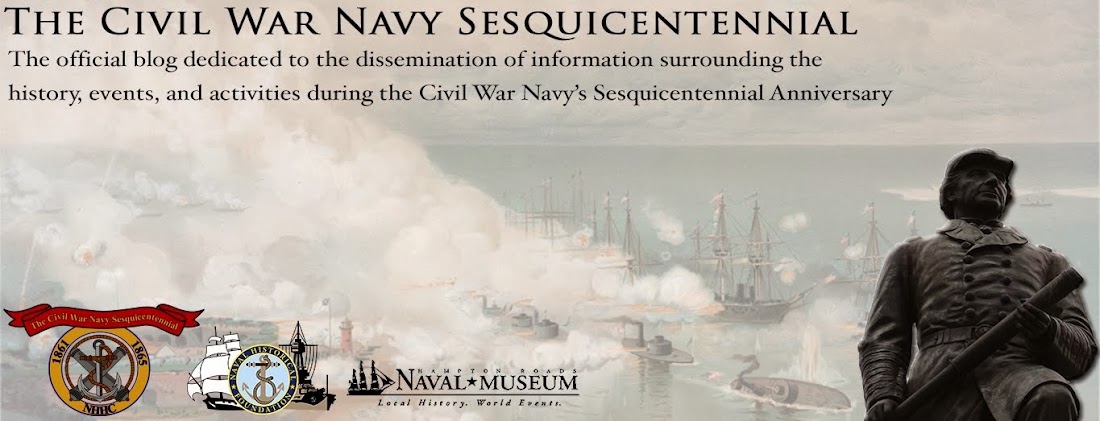On the evening of January 3, 1863, Acting Rear Admiral Sydney Phillips Lee, commanding officer of the North Atlantic Blockading Squadron, dictated a telegram to Secretary of the Navy Gideon Welles. As it was a telegram and not a hand written letter, Lee wrote a very matter-of-fact note that lacked any sort of emotional loss.
"Fort Monroe, VA., January 3, 1863
By 9:30 p.m., Welles received the preliminary report of what happened to Monitor. Namely, after several hours fine weather, squalls hit Monitor and the steamer Rhode Island, which had the ironclad in tow. He also received a more detailed report of causalities: sixteen men loss from Monitor's company and eight men from Rhode Island, who drowned during the rescue mission.
Upon seeing Monitor in trouble, Rhode Island's commanding officer immediately ordered all of his ships' small boats to put into the water. One of Rhode Island's officers, Acting Master's Mate D. Rodney Browne and his team, made three trips between the two ships. It was on the third trip that a squall turned the cutter over and they were all believed to be lost.
A few days later, the Acting Master Mate Browne and his team turned up alive. Their boat had not tipped over as suspected, but rather blown out to sea. The sailors roughed out in the heavy seas for 24 hours, before a passing leaky schooner operating under an Army contract called A. Colby picked them up. Unfortunately, the schooner ran aground at Diamond Shoals. Good fortune continued, however, as the gunboat USS Miami saw the schooner's distress signal and towed it into Beaufort. Due to men like Browne, many of Monitor's sailors were saved.
When Lee had time to digest the loss, he composed a hand written note to Welles that started with the words "Sir: I have the painful duty to perform of reporting the loss of the Monitor at sea..." Lee's compilation of reports of all ships involved on the lost can be read here.
A few days later, the Acting Master Mate Browne and his team turned up alive. Their boat had not tipped over as suspected, but rather blown out to sea. The sailors roughed out in the heavy seas for 24 hours, before a passing leaky schooner operating under an Army contract called A. Colby picked them up. Unfortunately, the schooner ran aground at Diamond Shoals. Good fortune continued, however, as the gunboat USS Miami saw the schooner's distress signal and towed it into Beaufort. Due to men like Browne, many of Monitor's sailors were saved.
When Lee had time to digest the loss, he composed a hand written note to Welles that started with the words "Sir: I have the painful duty to perform of reporting the loss of the Monitor at sea..." Lee's compilation of reports of all ships involved on the lost can be read here.











